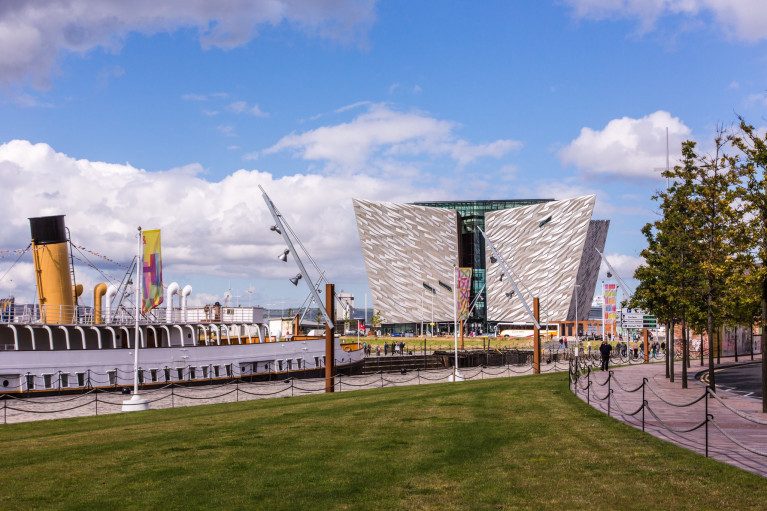Displaying items by tag: OPERA Amsterdam
Maritime Belfast Celebrates 10th Year of Titanic Beflast With New Gallery Refreshment Programme
Titanic Belfast which celebrates its 10th birthday, has according to a report generated an estimated £430 million in direct spend for the Northern Ireland economy since opening its doors a decade ago.
The world-leading visitor attraction Titanic Belfast, has welcomed almost 6.5 million visitors from over 145 countries and has embarked on its most ambitious project, and largest single investment to date, a multi-million pound gallery refreshment programme.
The investment will come from the Titanic Belfast Gallery Refreshment Fund, established when the building opened as part of the commercial operator agreement and held by the charity owner, Maritime Belfast Trust.
Following an international tender competition, Titanic Belfast has appointed OPERA Amsterdam and Studio Louter to design and deliver the significant project.
Judith Owens MBE, Chief Executive of Titanic Belfast said: “As part of the 10th birthday celebrations, we are delighted to announce a multi-million pound gallery refreshment programme which will deliver a world-class spectacle by combining innovative technology with the authentic Titanic story to deliver an enriched, emotive and immersive visitor experience which will sustain Titanic Belfast as a must-see global attraction for years to come.
“Since opening on Saturday 31st March 2012, Titanic Belfast has gone from strength to strength and played a key role in the resurgence of tourism, not only for Belfast and Northern Ireland, but for the island of Ireland as a whole. In the last 10 years, we have firmly established ourselves on the local, national and international stage, winning a host of prestigious accolades including being named as the World’s Leading Tourist Attraction.
“82% of visitors come from outside of Northern Ireland demonstrating the important driver this iconic building plays for inbound tourism. Titanic Belfast has not only driven leisure tourism but has been fundamental in reinvigorating Belfast’s event industry as one of the city’s signature venues having hosted over 3,000 business and leisure events. We are firmly committed to preserving the authenticity of Belfast’s maritime and industrial heritage and in playing a pivotal role in the regrowth of local tourism post-pandemic, particularly as international travel resumes.”
Kerrie Sweeney, Chief Executive Officer of Maritime Belfast Trust, charity owner of Titanic Belfast, said: “On behalf of Maritime Belfast Trust we would like to congratulate Titanic Belfast on reaching this 10 year milestone as well generating the local economic impact of £430m. Located at the heart of Belfast’s Maritime Mile it plays a key part in making our iconic waterfront a vibrant, accessible heritage destination.
Alongside Titanic Belfast, we are delighted to announce plans for the Gallery Refreshment programme in 2023, our most ambitious project and largest single investment to date. Delivered through the Titanic Belfast Gallery Refreshment Fund, it will ensure Titanic Belfast maintains standout, remains a catalyst and key enabler for the regrowth of the tourism industry, driving visitors to Belfast, Northern Ireland and from international markets.
We look forward to working with Titanic Belfast, Opera Amsterdam and Studio Louter on the delivery of the project which will enable Titanic Belfast to continue to push boundaries and maintain international standout, whilst preserving our rich maritime heritage for current and future generations to enjoy.”
Titanic Belfast has an exciting programme of events planned to mark their 10th birthday.





























































